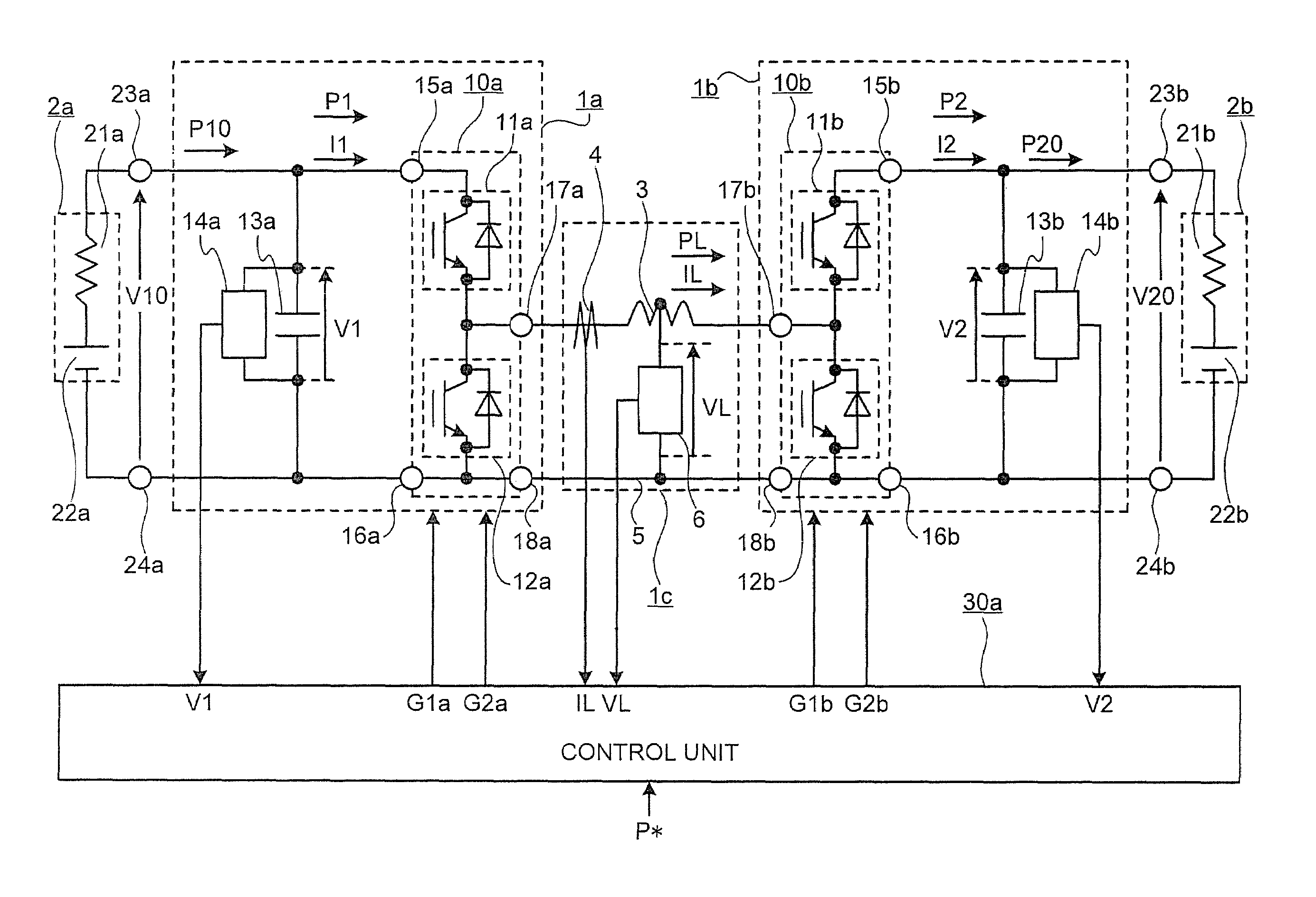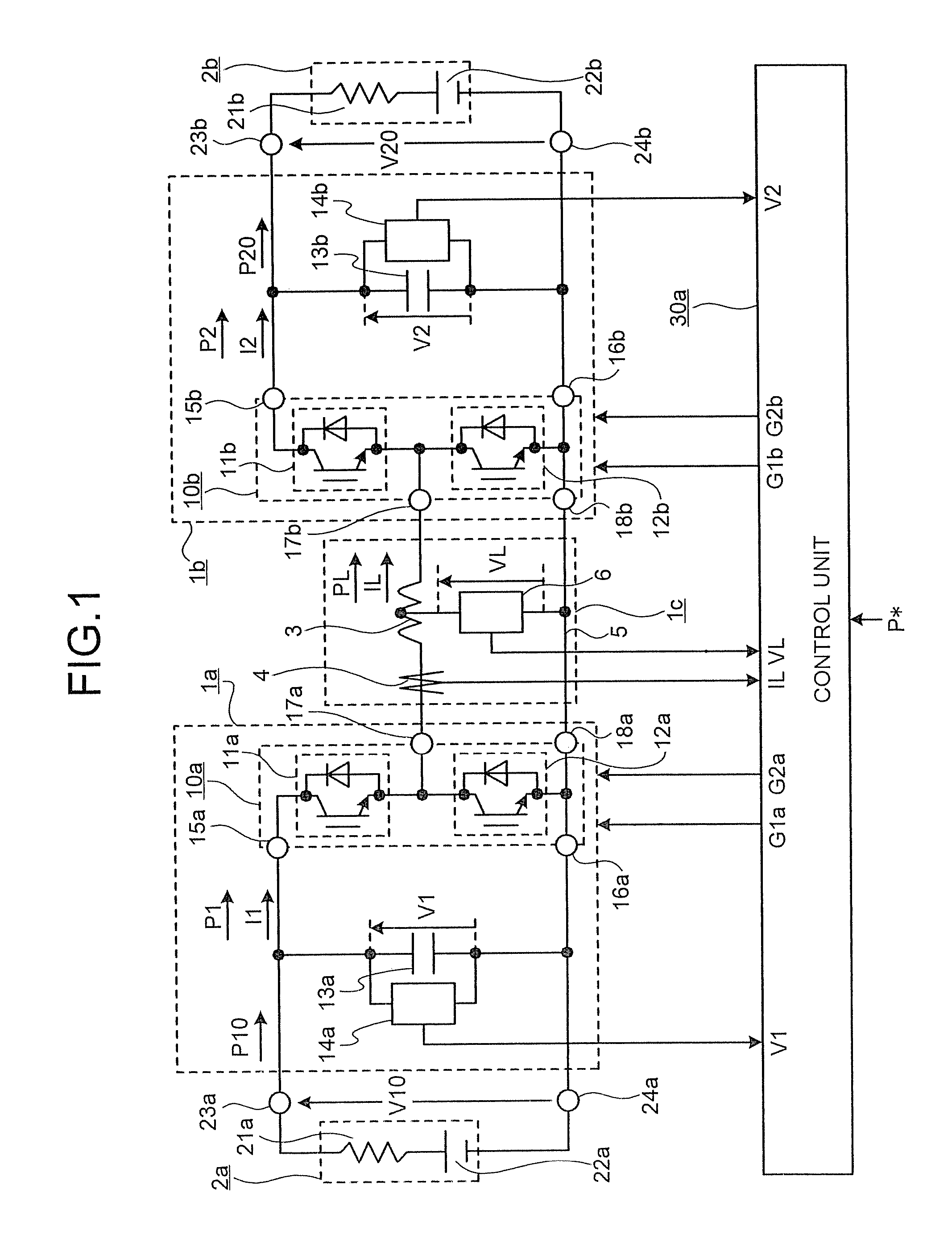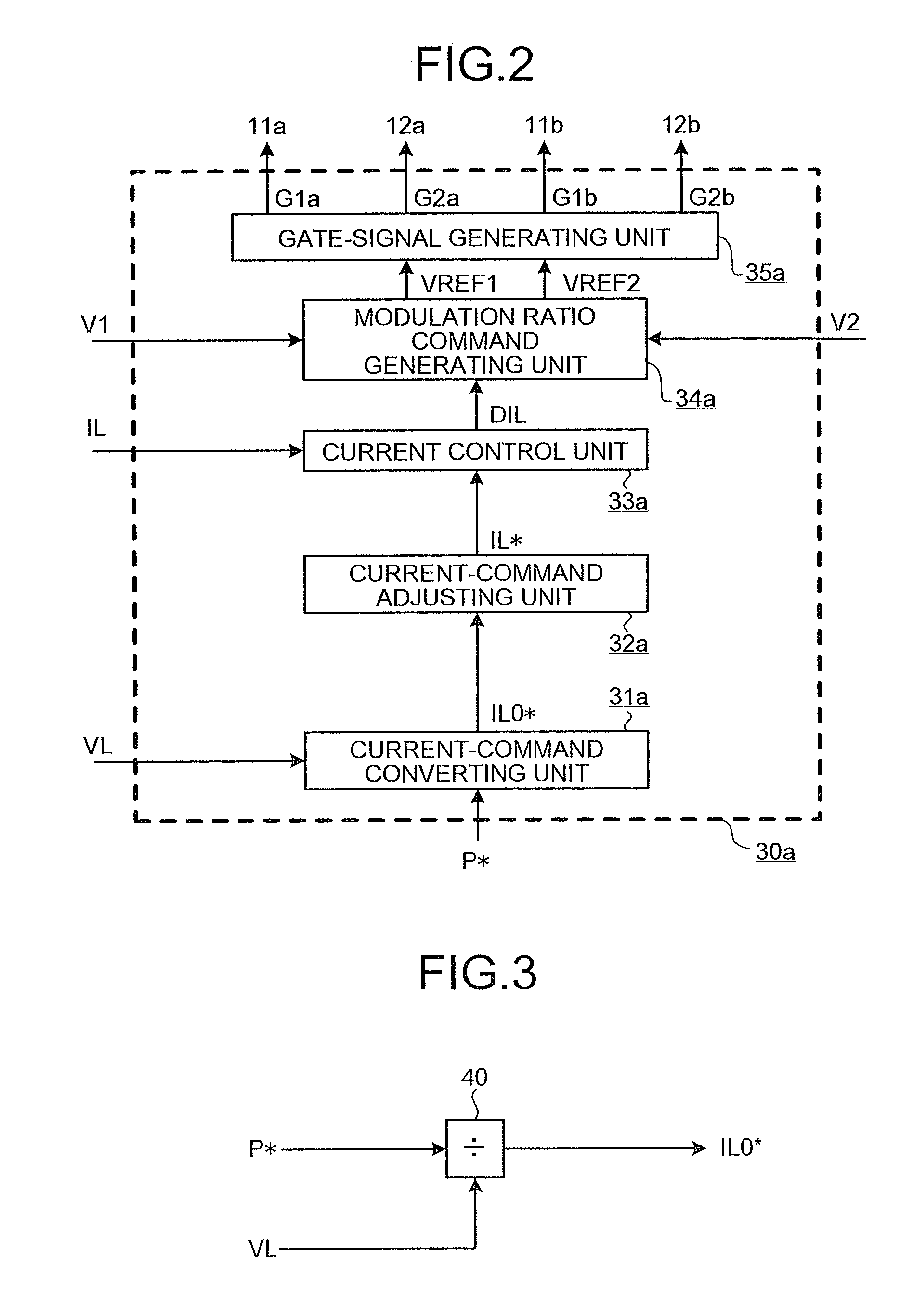Bidirectional buck boost DC-DC converter, railway coach drive control system, and railway feeder system
a buck boost and converter technology, applied in the direction of process and machine control, pulse technique, instruments, etc., can solve the problem that the buck boost dc-dc converter as described above cannot control curren
- Summary
- Abstract
- Description
- Claims
- Application Information
AI Technical Summary
Benefits of technology
Problems solved by technology
Method used
Image
Examples
first embodiment
[0114]FIG. 1 is a configuration diagram of a bidirectional buck boost DC-DC converter according to the first embodiment. As shown in FIG. 1, a primary-side converting unit 1a is connected to input / output terminals 23a and 24a of a primary-side power supply 2a including a primary-side power supply impedance 21a and a primary-side power supply voltage source 22a, and is connected to a secondary-side converting unit 1b that is connected to input / output terminals 23b and 24b of a secondary-side power supply 2b including a secondary-side power supply impedance 21b and a secondary-side power supply voltage source 22b through a coupling unit 1c including a coupling reactor 3 and a connecting line 5.
[0115]The primary-side converting unit 1a includes a primary-side switching circuit 10a in which switching elements 11a and 12a are connected in series, a primary-side capacitor 13a that is connected in parallel with the primary-side switching circuit 10a, and a voltage detector 14a that detects...
second embodiment
[0175]A configuration of a bidirectional buck boost DC-DC converter according to the second embodiment of the present invention is explained in detail below with reference to the drawings. Only parts different from the bidirectional buck boost DC-DC converter in the first embodiment of the present invention are described below.
[0176]FIG. 16 is a configuration diagram of the bidirectional buck boost DC-DC converter according to the second embodiment of the present invention. In addition to the above first embodiment, the bidirectional buck boost DC-DC converter in the second embodiment includes a current detector 7a that detects the primary-side switching circuit current I1 and a current detector 7b that detects the secondary-side switching circuit current I2. Furthermore, a configuration of a control unit 30b has the following characteristics.
[0177]FIG. 17 is a diagram illustrating a configuration example of the control unit 30b according to the second embodiment of the present inve...
third embodiment
[0207]A configuration of a bidirectional buck boost DC-DC converter according to the third embodiment of the present invention is explained in detail below with reference to the drawings. The configuration in the third embodiment is based on that in the second embodiment. Only parts different from the bidirectional buck boost DC-DC converter in the second embodiment of the present invention are described below.
[0208]FIG. 27 is a configuration diagram of the bidirectional buck boost DC-DC converter according to a third embodiment of the present invention. In the bidirectional buck boost DC-DC converter in the third embodiment, the current detector 7a for detecting the primary-side switching circuit current I1 and the current detector 7b for detecting the secondary-side switching circuit current I2 that are provided in the configuration in the second embodiment are omitted. Furthermore, a configuration of a control unit 30c has the following characteristics.
[0209]FIG. 28 is a diagram ...
PUM
 Login to View More
Login to View More Abstract
Description
Claims
Application Information
 Login to View More
Login to View More - R&D
- Intellectual Property
- Life Sciences
- Materials
- Tech Scout
- Unparalleled Data Quality
- Higher Quality Content
- 60% Fewer Hallucinations
Browse by: Latest US Patents, China's latest patents, Technical Efficacy Thesaurus, Application Domain, Technology Topic, Popular Technical Reports.
© 2025 PatSnap. All rights reserved.Legal|Privacy policy|Modern Slavery Act Transparency Statement|Sitemap|About US| Contact US: help@patsnap.com



